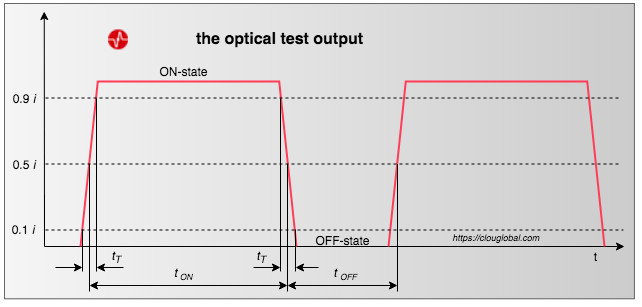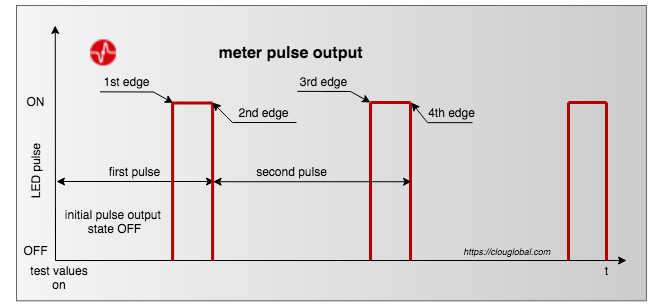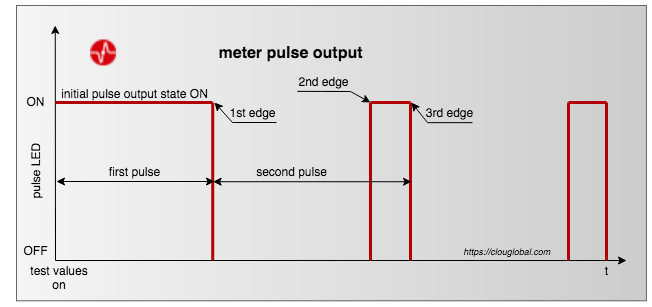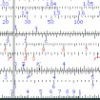Each electronic energy meter must have at least one optical test output. Commonly its named with flashing pulse diode or similar. It indicates the actual power consumption. Faster flash = higher consumption, we see this later.
These diodes are necessary to enable any utility or test institute to verify the meter accuracy with suitable equipment.
Typically, we have one diode for active energy and one diode for reactive energy.
The ON and OFF states
Luckily everything is defined. For a fast and accurate measurement with a high repeatability it is essential that the diode switching and the scanning head detection are matching.

The IEC62052-11 is providing us with a nice graphics. We have made it a bit easier to understand. A diode is not simply ON or OFF, the illumination starts from zero to 100 %.
The transition time tT of the diode illumination is measured between 10 % and 90 %.
The maximum duration for this transition is: tT < 20 μs.
The diode state is evaluated as ON when the rising illumination reaches 50 %. The duration of this ON-state must be tON ≥ 0,2 ms. The same minimum time must be for the OFF-state.
The maximum pulse frequency is 2.5 kHz.
No panic, this is only for information. A test bench or portable meter test equipment from a reputed manufacturer is triggering the pulses at the right time automatically.
The energy proportional Pulses
The optical test output generates a number of pulses proportional to the measured energy.
You can read it on the name plate. It's indicated by the meter constant.
The meter constant is usually expressed in pulses per kWh (active energy). So, a meter with a meter constant of 1000 imp/kWh will flash one thousand times per day if the refrigerator is the only appliance running at your home (average value for daily refrigerator consumption).
For a meter accuracy test with this low load we shall of course not wait one day. So the test is done with fewer pulses.
The IEC requires a measuring accuracy of at least ± 1/10th of the class of the meter. So, how many pulses are needed? You can use our pulse calculator or any of our test bench models together with the EMS5 software. Then the pulse calculation is done with the required accuracy.
What is a pulse?
You have already realized that a pulse is not a flash of the diode, it's the duration between two flashes.
Is this important?
When you are meter tester you can save some testing time under certain conditions.

The diagram shows a meter with initial pulse LED off. Means, you energize the meter and wait for the first pulse. By CLOU definition the pulse is the time between two consecutive ON to OFF transitions.
For starting test you need to make sure that the meter starts and continues to measure. This means, at least 3 transitions or in our case, 2 pulses.

If the initial state is ON, we also get the first pulse when the diode is switching OFF. If you have a test bench from a manufacturer who triggers on a OFF-ON transition, you will receive the first pulse at the 2nd edge, so you have to wait the double time. This can be for a single phase meter easy 30 minutes additional testing time.
This article is as usual extremely simplified. If you have questions or comments, please drop them in the comments box. We meter testers are a small community.
Thank you for reading and "Happy Testing".
Editor's note: This article was originally published in August 2020 and has been updated for comprehensiveness.





All comments are moderated before being published. Inappropriate or off-topic comments may not be approved.